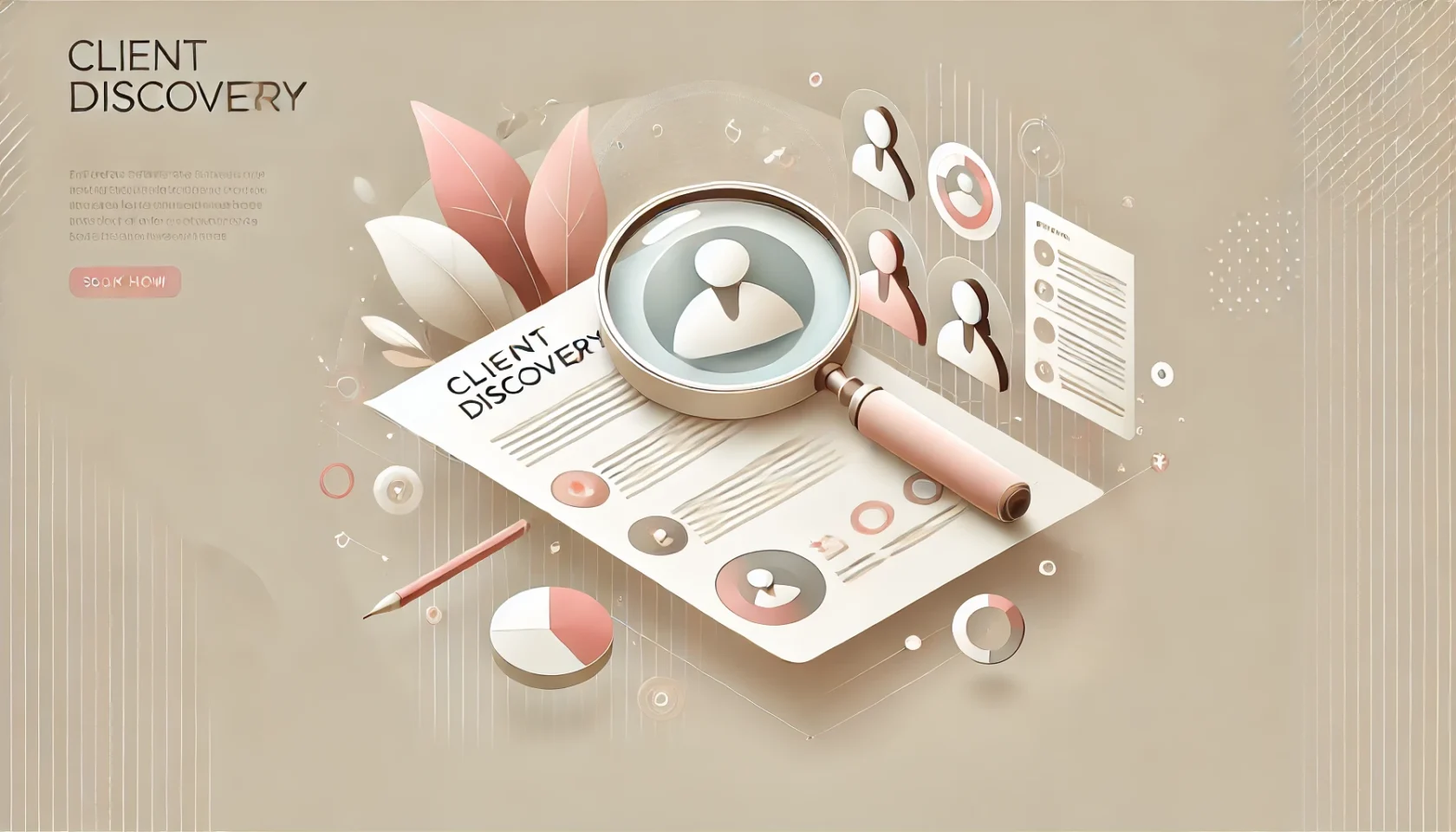
When you’re a freelancer or part of a digital agency, nothing is more exhilarating yet nerve-wracking than landing a new client. The prospect of forging new relationships, understanding fresh challenges, and crafting bespoke solutions is what drives many of us. But let’s face it, the beginning of this journey is often plagued with uncertainty and miscommunication. We’ve all been there—spending hours on a project only to realize that our vision doesn’t quite align with the client’s expectations. Frustrating, isn’t it?
This initial misalignment often stems from an inadequate client discovery process. It’s the critical first step where you gather essential information about your client’s needs, goals, and pain points. Without it, you’re essentially flying blind, which can lead to wasted time, strained relationships, and subpar outcomes. But don’t worry, this guide is here to change that. By the end of this article, you’ll have a clear understanding of what client discovery is, why it’s essential, and how to conduct it effectively. More importantly, you’ll learn about the tools and strategies that can streamline this process, saving you time and enhancing client satisfaction.
Now, let’s dive into the nitty-gritty of client discovery and how you can turn this process into your secret weapon for success.
What is Client Discovery and why is it important?
Client discovery is the process of understanding your client’s needs, goals, and challenges before embarking on a project. Think of it as the foundation upon which your entire project is built. If this foundation is solid, you’ll have a clear direction and a higher chance of delivering exactly what your client wants. If it’s shaky, you risk miscommunication, missed deadlines, and an end product that misses the mark.
For digital agencies and freelancers, the client discovery phase is non-negotiable. It’s your opportunity to ask questions, listen carefully, and gather all the information you need to craft a proposal that aligns perfectly with your client’s vision. During this phase, you should be looking to uncover not just the obvious needs but also the underlying desires and long-term goals of your client. This depth of understanding is what sets apart successful projects from mediocre ones.
Tip 1: Client Portal
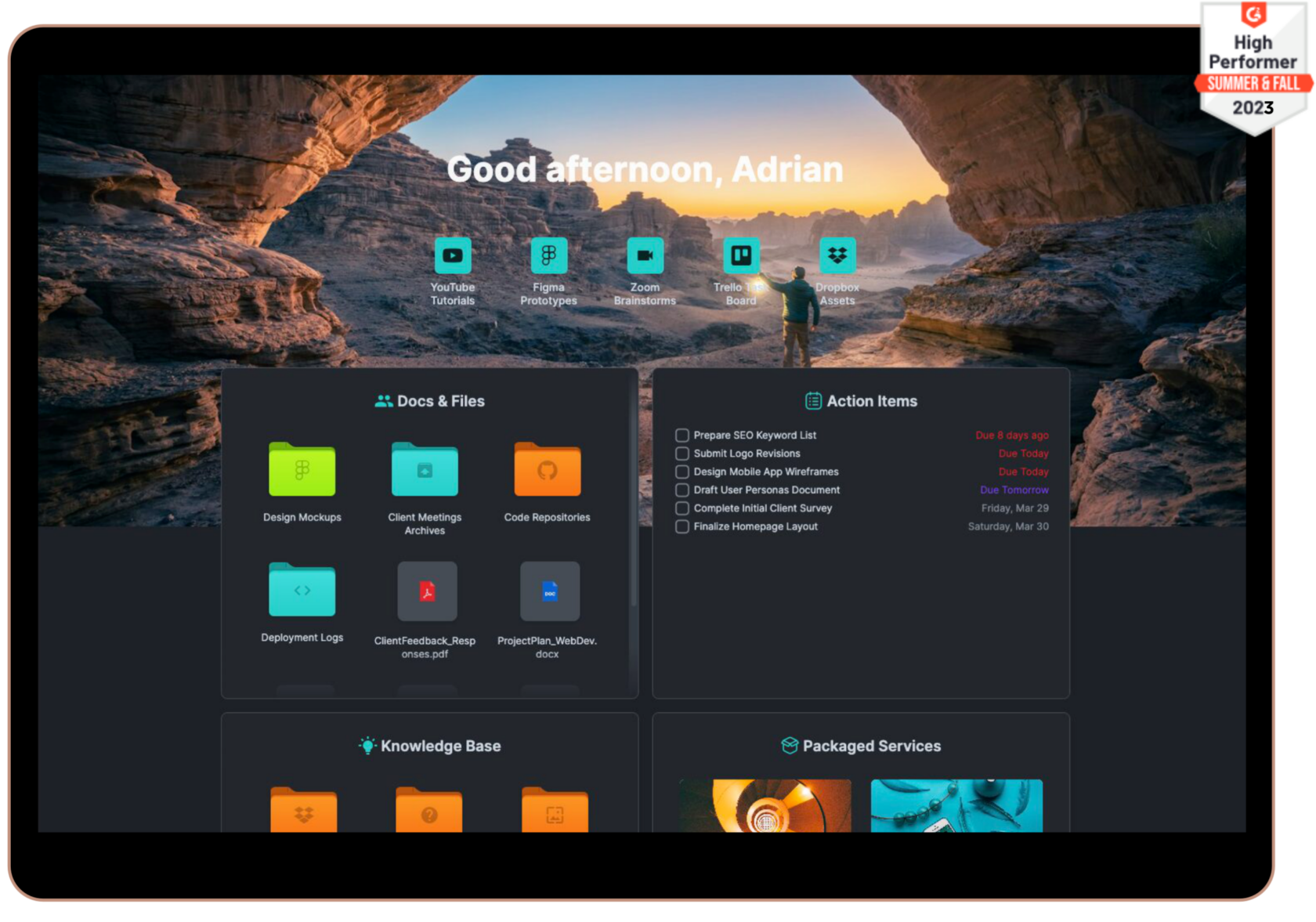
One of the most effective ways to enhance your client discovery process is by using a client portal. A client portal is a secure online platform where you can manage all your client interactions, share documents, track project progress, and communicate seamlessly. For freelancers and digital agencies, a client portal can be a game-changer.
At SuperOkay, we understand the unique challenges faced by freelancers and digital agencies, and we’ve designed our client portal to address these specific needs. Our platform provides a centralized space where you can conduct your client discovery sessions, ensuring that all critical information is captured and stored in one place. This not only streamlines your workflow but also enhances transparency and collaboration with your clients.
Imagine starting your client discovery process by inviting your client to a dedicated portal where they can fill out a detailed questionnaire about their needs and expectations. This pre-meeting preparation can save you hours and ensure that your initial conversation is focused and productive. With SuperOkay’s client portal, you can also share project timelines, milestones, and deliverables, keeping everyone on the same page and reducing the likelihood of misunderstandings.
🔑 Key Features
• Simple User Interface: Clean, intuitive interface that is easy for clients to navigate
• Fully Customizable: Tailor the look and functionality of the portal to fit your brand and client needs
• Embedded Tools: Features integrations with other tools via “embeds”
• Storage: 1TB with Business Plan
💰 Pricing
Price: Starts at 9$/month (2GB to 1TB, depending on plan)
Free Tier: Yes (500MB)
🧐 Why SuperOkay?
SuperOkay is loved by its users for its exceptional usability and comprehensive feature set, making it a great choice for agencies looking for an easy to use yet powerful client portal.
What sets SuperOkay apart is its ability to combine ease of use with great functionality, making it a simple client portal that does not compromise on features.
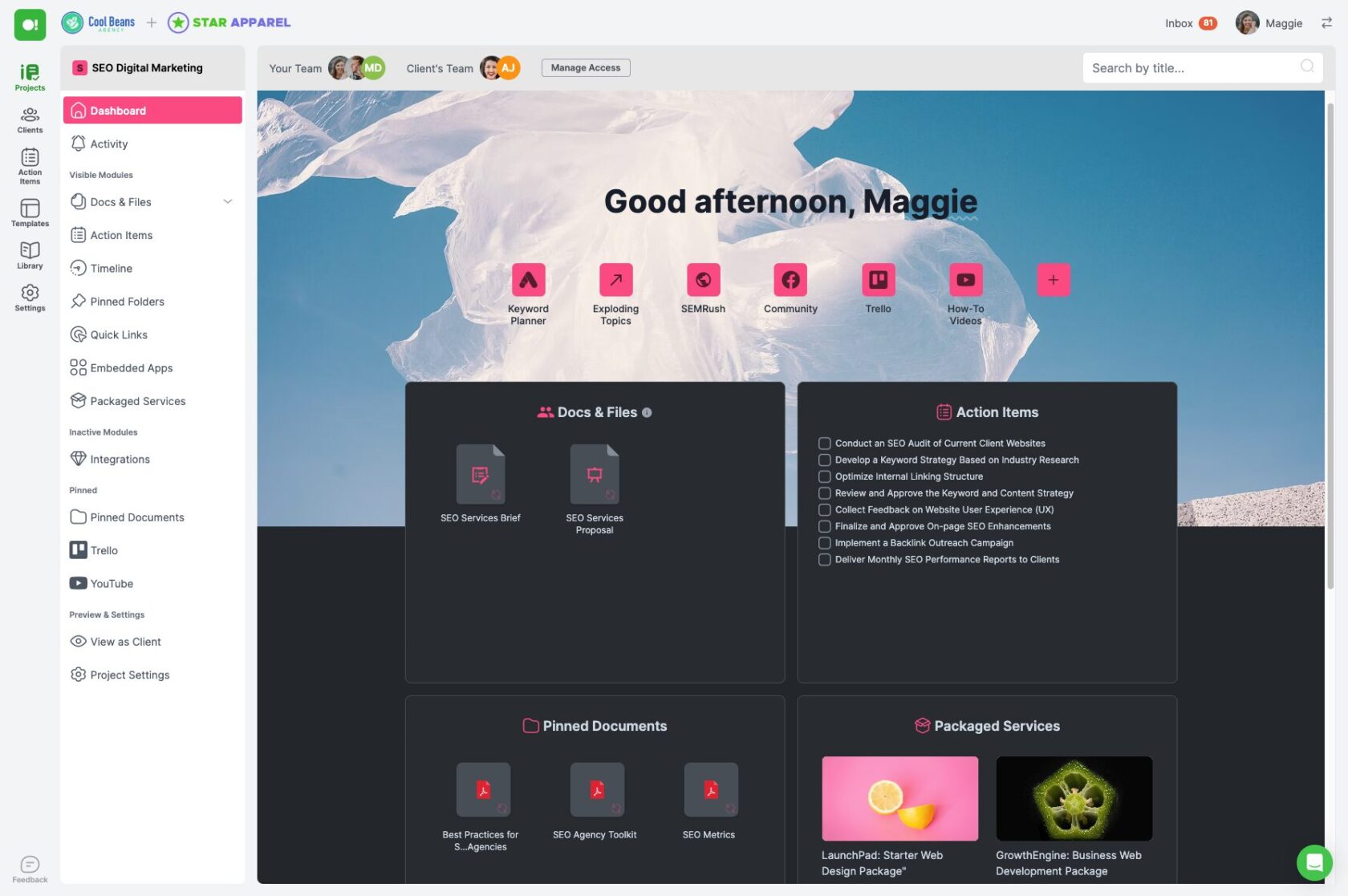
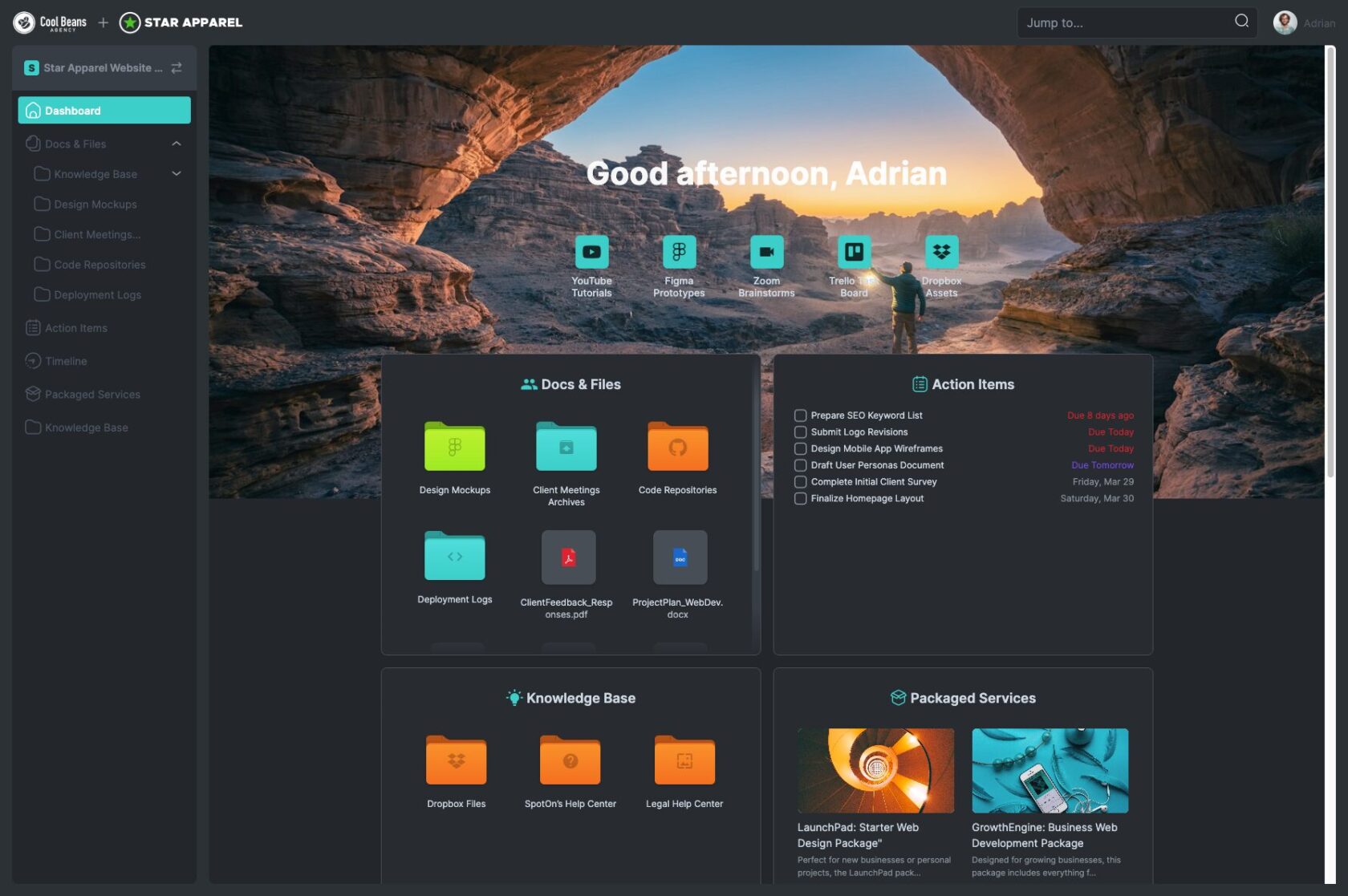
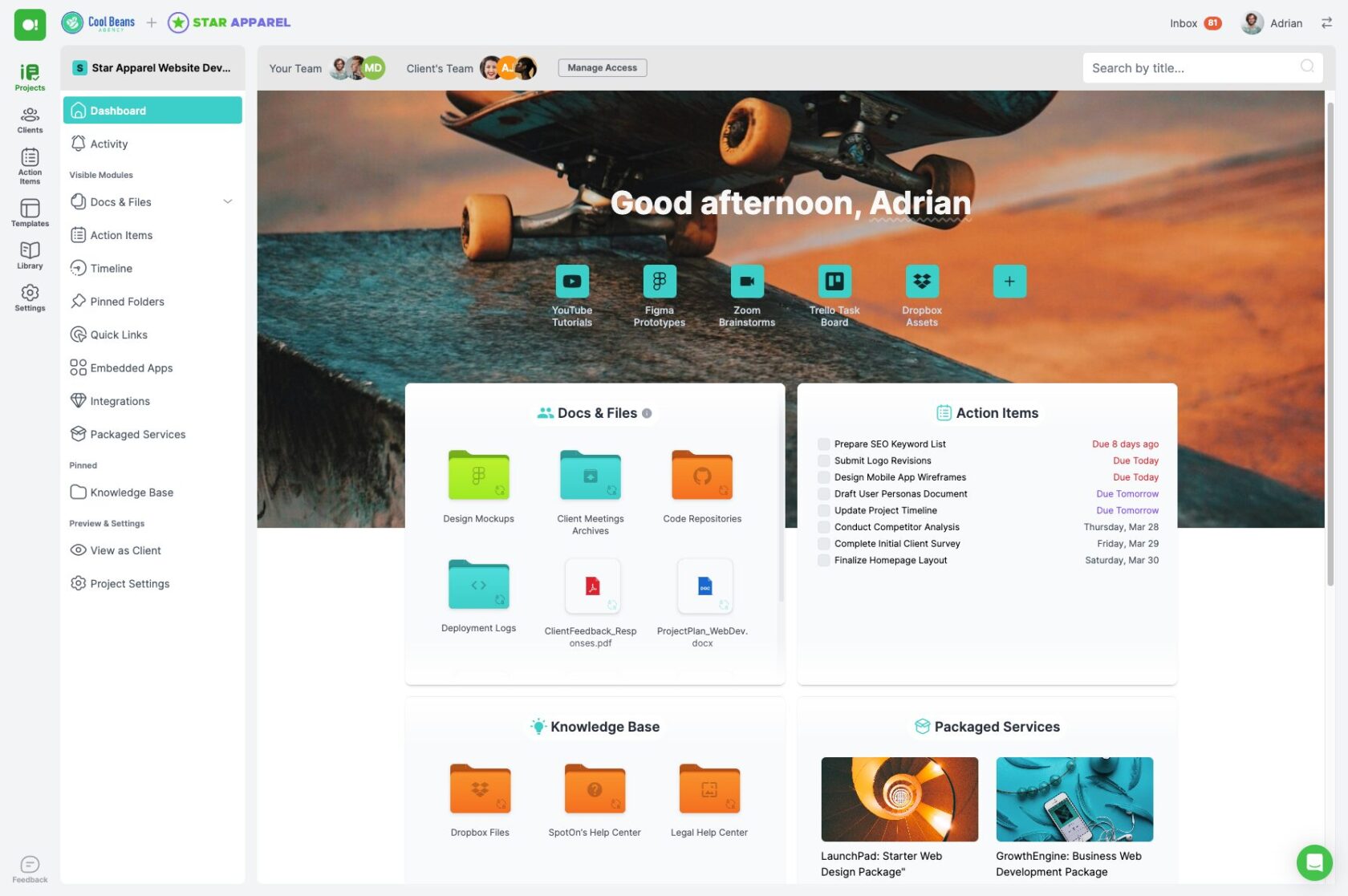
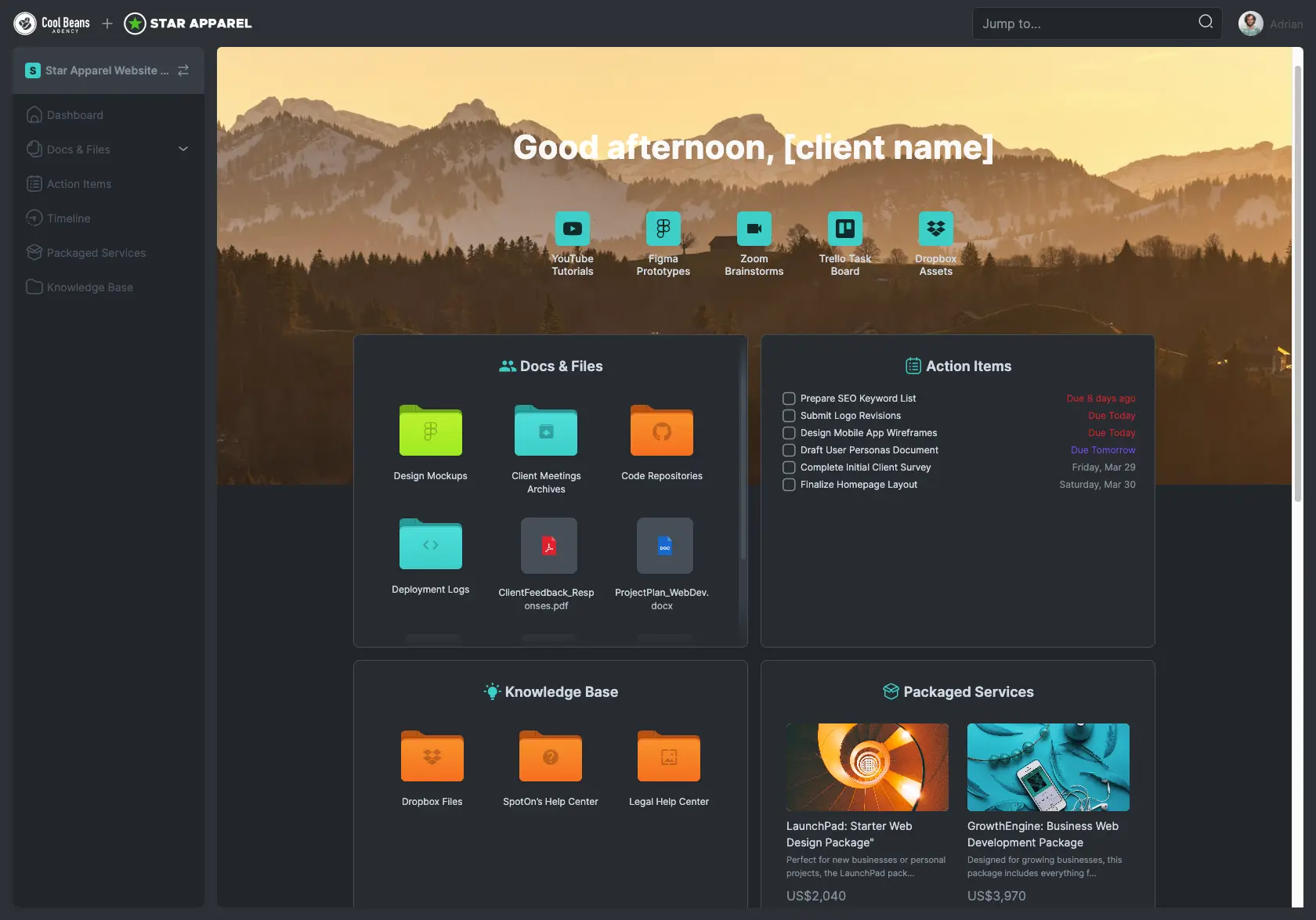
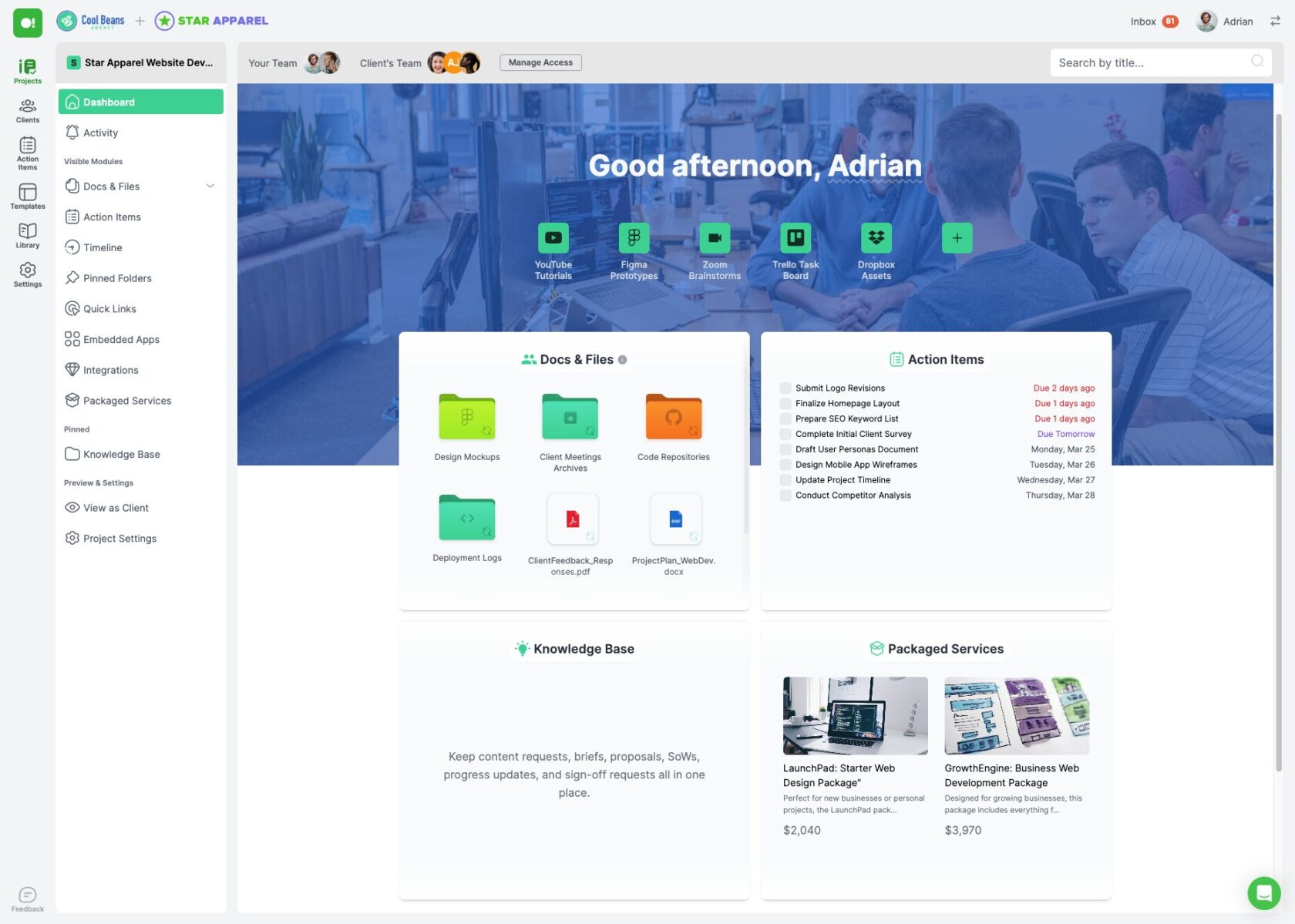
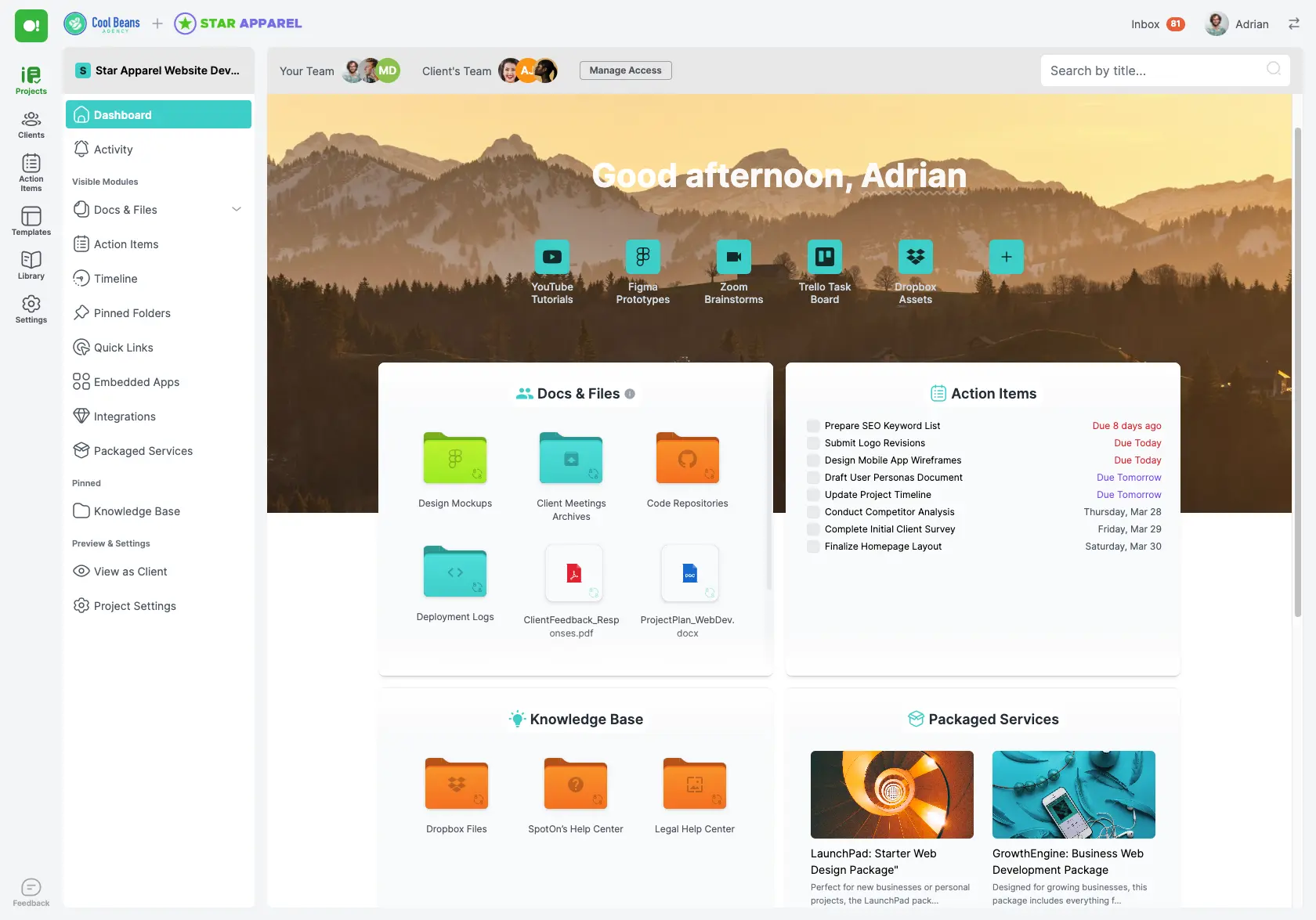
Tip 2: Ask the right questions
One of the most critical aspects of a successful client discovery process is asking the right questions. It’s not just about gathering information; it’s about understanding the nuances of your client’s needs, goals, and challenges. The quality of your questions can significantly impact the depth of insight you gain, which in turn, shapes the success of the entire project.
Start by preparing a comprehensive list of questions that cover various aspects of the project. These questions should be open-ended to encourage detailed responses. For instance, instead of asking, “Do you want a website?” ask, “What specific goals do you want to achieve with your new website?” This approach helps you understand the client’s vision and objectives, beyond just the technical requirements.
Here are some key areas to focus on when framing your questions:
• Business Goals: Understanding your client’s business objectives is crucial. Ask about their short-term and long-term goals, target audience, and competitive landscape. Questions like, “What business goals are you hoping to achieve with this project?” or “Who are your main competitors, and how do you differentiate yourself from them?” can provide valuable insights.
• Pain Points: Identifying your client’s pain points helps you tailor your solutions to address their most pressing challenges. Questions such as, “What challenges are you currently facing with your existing solution?” or “What has prevented you from achieving your goals in the past?” can uncover critical information.
• Project Scope and Expectations: Clarify the project scope and manage expectations by asking detailed questions about deliverables, timelines, and budget. For example, “What specific features and functionalities are you looking for?” or “What is your budget and timeline for this project?” can help you align your services with their expectations.
• Success Metrics: Determine how the client will measure the success of the project. Questions like, “How will you define success for this project?” or “What key performance indicators (KPIs) are most important to you?” can guide your efforts towards achieving their desired outcomes.
By asking the right questions, you not only gather essential information but also demonstrate your expertise and commitment to understanding your client’s needs. This builds trust and sets the stage for a successful collaboration.
Tip 3: Conduct a Thorough Market Analysis
Understanding the market in which your client operates is crucial for a successful client discovery process. Conducting a thorough market analysis allows you to offer more informed recommendations and position your client’s project for success. This step involves researching the client’s industry, competitors, target audience, and current market trends.
Here’s how you can effectively conduct a market analysis:
• Industry Research: Start by gaining a comprehensive understanding of the client’s industry. Look at industry reports, publications, and online resources to gather relevant information. Understand the key trends, challenges, and opportunities within the industry. This knowledge will help you align your strategies with industry standards and innovations.
• Competitive Analysis: Analyze your client’s competitors to understand their strengths, weaknesses, and market positioning. Identify the strategies that competitors are using and evaluate their effectiveness. Tools like SWOT analysis (Strengths, Weaknesses, Opportunities, Threats) can be useful here. Ask your client for their perspective on their competitors and cross-check this with your research.
• Target Audience: Understanding your client’s target audience is vital for tailoring your solutions to meet their needs. Create detailed buyer personas that include demographics, preferences, behaviors, and pain points. This information helps in crafting messages and solutions that resonate with the end-users.
• Market Trends: Stay updated with the latest market trends and technological advancements relevant to your client’s industry. This includes emerging technologies, consumer behavior trends, and economic factors that could impact the project. Use this information to provide innovative solutions and keep your client ahead of the curve.
Conducting a market analysis not only equips you with valuable insights but also shows your client that you are thorough and proactive. It enables you to provide data-driven recommendations and positions you as a knowledgeable partner invested in their success.
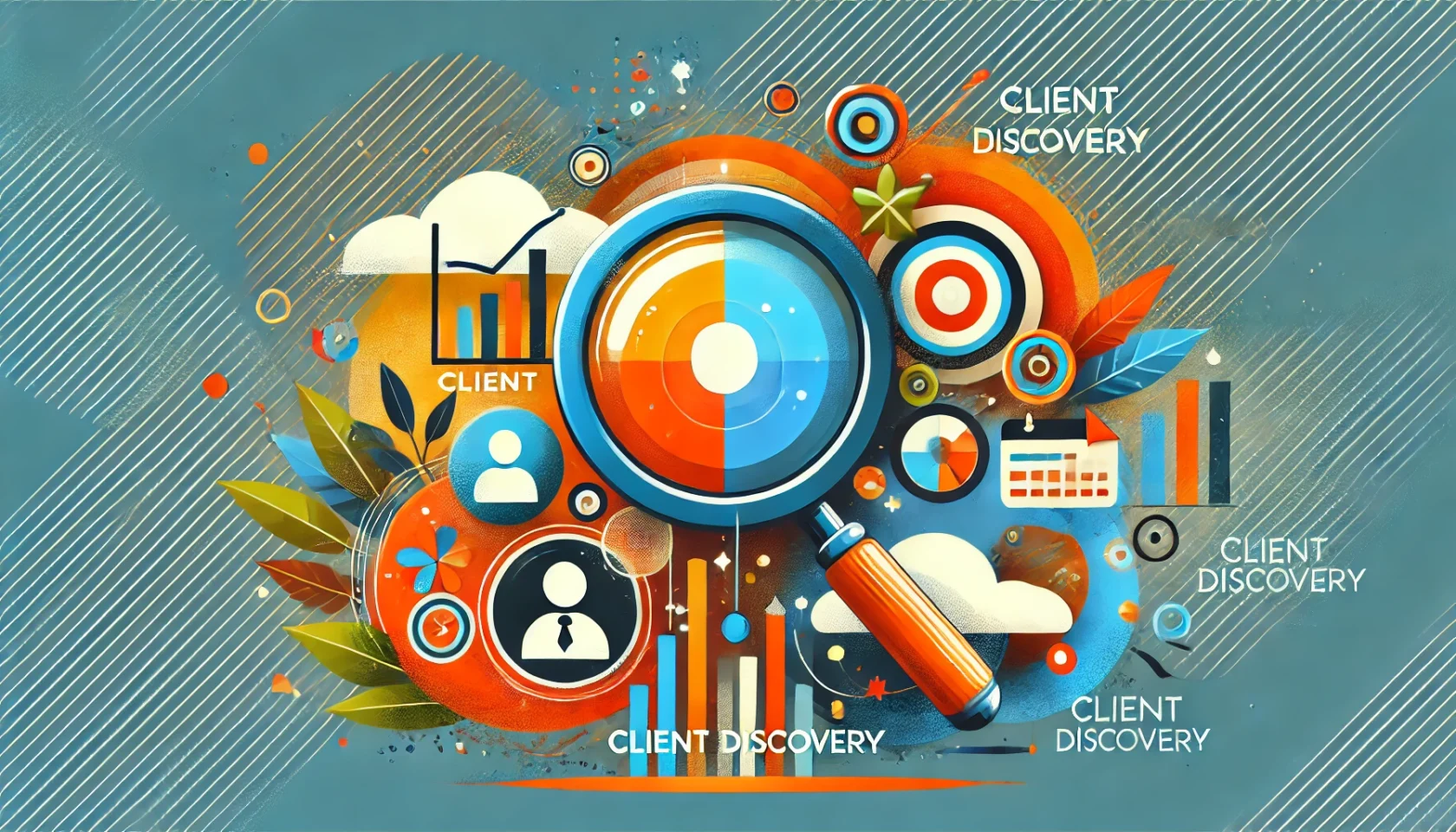
Tip 4: Use a Client Discovery Template
Streamlining your client discovery process can be significantly enhanced by using a client discovery template. A well-designed template ensures that you cover all essential areas, gather consistent information across different projects, and save time. It serves as a structured guide that helps you stay organized and focused during discovery sessions.
Here’s how you can create and use an effective client discovery template:
• Standardized Questions: Include a set of standardized questions that cover key aspects such as business goals, project scope, pain points, and success metrics. This ensures you gather comprehensive information in a systematic way. You can customize these questions based on the specific needs of each project.
• Sections and Categories: Organize the template into sections and categories for easy navigation. For example, you might have sections for client background, project details, technical requirements, and budget considerations. This structure helps you ensure that no critical area is overlooked.
• Customizable Fields: Design the template with customizable fields to accommodate unique project requirements. While standard questions provide a consistent framework, customizable fields allow you to tailor the template to each client’s specific needs.
• Digital Format: Use a digital format for your template to make it easily accessible and shareable. Tools like Google Docs, Microsoft Word, or specialized project management software can be used to create and manage your templates. Digital templates can be updated and refined over time based on feedback and evolving needs.
• Example Templates: To get started, you can look for example templates online or use SuperOkay’s Project Discovery Proposal Template, which is specifically designed to meet the needs of freelancers and digital agencies. Our template provides a robust framework for your discovery sessions.
Using a client discovery template not only improves efficiency but also ensures consistency and thoroughness. It helps you capture all necessary details and reduces the risk of missing important information. Moreover, a well-organized template reflects professionalism and preparedness, which can enhance your credibility with clients.
Tip 5: Leverage Visual Aids and Documentation
Incorporating visual aids and thorough documentation into your client discovery process can significantly enhance understanding and communication. Visual aids such as flowcharts, wireframes, and mind maps can help illustrate complex ideas and ensure that both you and your client are on the same page. Documentation serves as a reliable reference that can be revisited throughout the project to maintain alignment.
Here’s how you can effectively leverage visual aids and documentation:
• Flowcharts and Diagrams: Use flowcharts and diagrams to map out processes, workflows, and project structures. These visuals help break down complex information into digestible parts, making it easier for clients to understand your proposed solutions.
• Wireframes and Mockups: For projects involving design and development, wireframes and mockups are invaluable. They provide a visual representation of the layout and functionality, allowing clients to visualize the end product. Tools like Sketch, Figma, or even simple paper sketches can be used to create these visuals.
• Mind Maps: Mind maps are excellent for brainstorming and organizing ideas. They help you capture the client’s thoughts and preferences in a structured format, which can then be used to inform the project plan.
• Comprehensive Documentation: Document all the insights and agreements from your client discovery sessions. This includes meeting notes, agreed-upon deliverables, timelines, and any specific client preferences. Share this documentation with your client to ensure mutual understanding and to serve as a reference throughout the project.
• Use SuperOkay’s Tools: SuperOkay offers a range of tools that integrate visual aids and documentation seamlessly into your client discovery process. Our platform allows you to create and share detailed project documentation, ensuring that all critical information is accessible and organized.
By using visual aids and thorough documentation, you enhance clarity, reduce misunderstandings, and foster a collaborative environment. This approach not only improves the client discovery process but also sets a strong foundation for project success.
| Tip Number | Description | Details |
| Tip 2 | Ask the Right Questions | Focus on business goals, pain points, project scope, and success metrics. |
| Tip 3 | Conduct a Thorough Market Analysis | Research industry trends, competitors, target audience, and market trends. |
| Tip 4 | Use a Client Discovery Template | Create a standardized template with sections for client background, project details, and more. |
| Tip 5 | Leverage Visual Aids and Documentation | Utilize flowcharts, wireframes, mind maps, and comprehensive documentation for better clarity. |
Conclusion
In this guide, we’ve explored the essential aspects of client discovery and how to master this critical phase for your projects. By understanding what client discovery is and why it’s important, asking the right questions, conducting thorough market analysis, using a client discovery template, and leveraging visual aids and documentation, you can transform your client interactions and project outcomes. These strategies not only enhance efficiency but also build stronger, more transparent relationships with your clients. Implement these tips, and you’ll find yourself better equipped to meet client expectations and deliver exceptional results every time.
Frequently Asked Questions
What is client discovery?
Client discovery is the process of gathering essential information about a client’s needs, goals, and challenges before starting a project. It sets the foundation for successful project planning and execution.
Why is client discovery important?
Client discovery is crucial because it helps ensure that the project aligns with the client’s vision and objectives. It reduces the risk of miscommunication, saves time, and increases the likelihood of delivering a successful outcome.
How can I improve my client discovery process?
You can improve your client discovery process by asking the right questions, conducting thorough market analysis, using a client discovery template, leveraging visual aids, and documenting all critical information.
What tools can help with client discovery?
Tools like SuperOkay’s client portal can significantly enhance your client discovery process by providing a centralized platform for managing client interactions, sharing documents, and communicating seamlessly.
How do visual aids help in client discovery?
Visual aids such as flowcharts, wireframes, and mind maps help illustrate complex ideas and ensure that both you and your client have a clear understanding of the project. They enhance communication and reduce the likelihood of misunderstandings.
Are you already using a Client Portal? SuperOkay gives you 1 client portal free forever to start creating professional-looking Client Portals, custom branded to your clients’ brands – Start today by clicking here!

Client Service: How to offer the best
Delivering exceptional client service is fundamental to any successful business. It goes beyond meeting basic expectations and involves creating memorable experiences …

How to Price Design and Development Services in 10 steps
Ah, the smell of new business on a Monday morning! A potential new client needs a new website, the initial meeting went great and you seem to be on the same page. You …

Project Management Life Cycle: What You Need to Know
For freelancers and digital agencies, the whirlwind of tasks and deadlines can be daunting. But what if there was a way to bring order to this chaos, streamline your p…
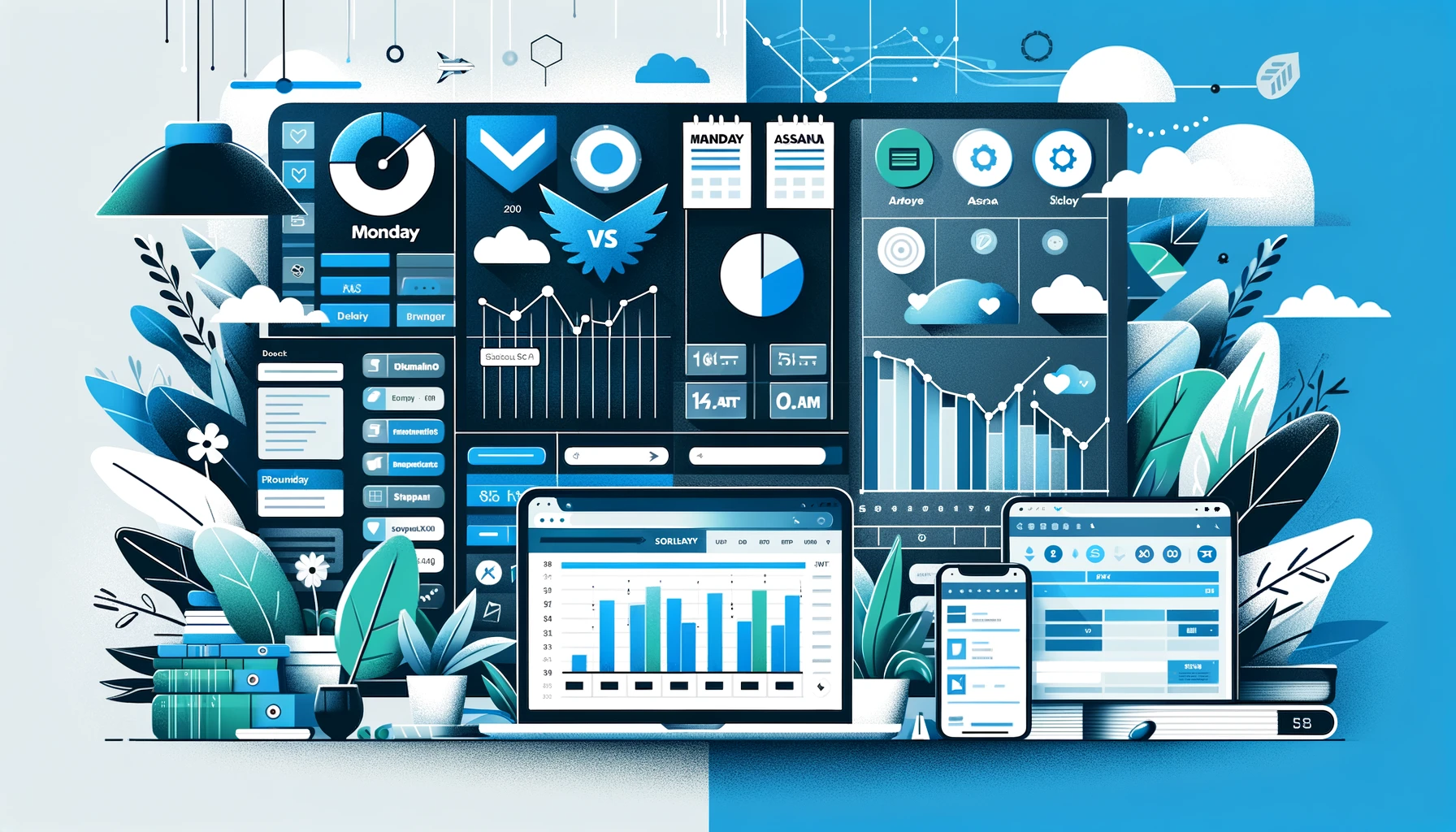
Monday vs Asana vs SuperOkay
Picture this: You’re a freelancer or you run a digital agency. Your to-do list is growing, your clients are emailing you for updates, and your projects are scattered a…